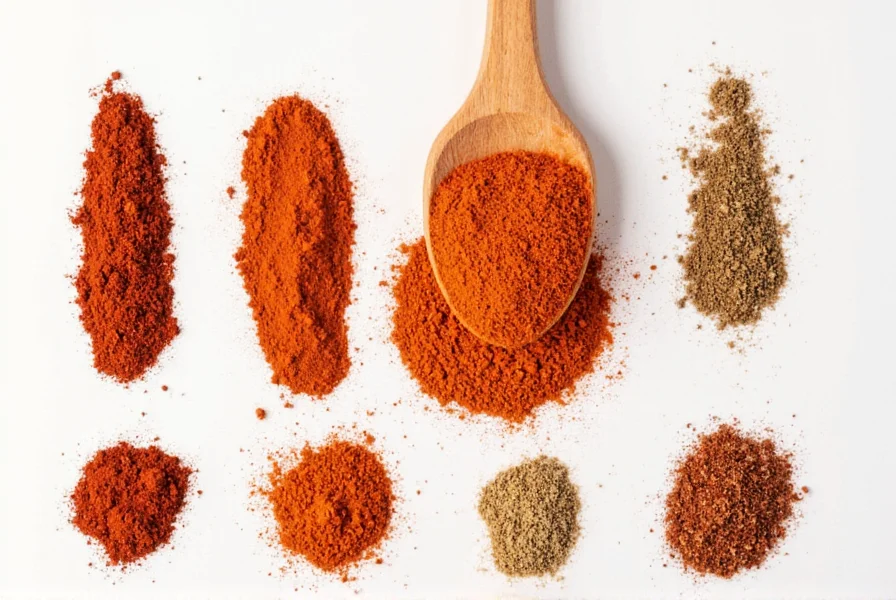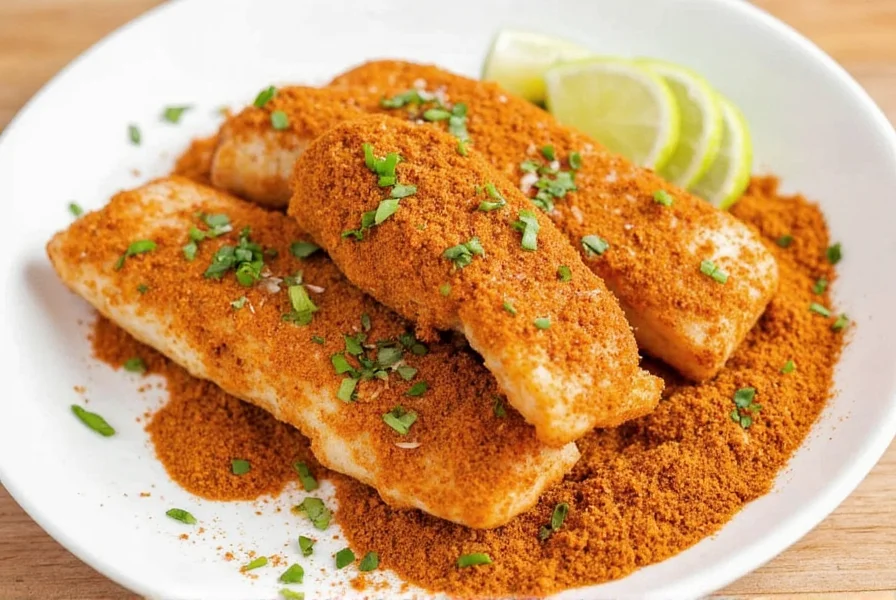Ground mace is the dried, ground outer covering (aril) of the nutmeg seed. It has a warm, slightly sweet flavor with subtle citrus and floral notes, commonly used in both sweet and savory dishes. Unlike nutmeg, which comes from the seed itself, mace offers a more delicate flavor profile that enhances baked goods, sauces, and holiday treats like gingerbread and mulled wine.
Table of Contents
- What Is Ground Mace Anyway?
- Why Replace Ground Mace?
- The 7 Best Ground Mace Replacements
- Comparison Table: Flavor Profiles & Uses
- How to Use These Alternatives Like a Pro
- Buying Guide: What to Look For in a Spice Substitute
- How to Save and Store Your Spices Right
- Frequently Asked Questions
- Final Thoughts
Why Replace Ground Mace?
- Unavailability: Not every pantry has ground mace stocked.
- Budget-Friendly: Mace can be more expensive than its substitutes.
- Allergies/Sensitivities: Some people avoid nutmeg family spices due to allergies.
- Vegan/Dietary Restrictions: Occasionally, recipes need tweaking for special diets.
- Flavor Experimentation: Why not explore other spices and discover new taste combinations?

The 7 Best Ground Mace Replacements
1. Nutmeg
Flavor Profile: Warm, nutty, slightly sweet
Best For: Baking, custards, creamy sauces
Nutmeg is the most direct substitute since mace comes from nutmeg's outer shell. Use a little less (about half the amount), as nutmeg has a stronger flavor.
2. Allspice
Flavor Profile: Cinnamon + clove + nutmeg all in one
Best For: Stews, meat rubs, spiced cakes
Allspice brings warmth and depth, making it perfect for hearty dishes and pies. It pairs well with apples and pears.
3. Cinnamon
Flavor Profile: Sweet, woody, aromatic
Best For: Oatmeal, cookies, hot drinks
Cinnamon is a versatile alternative that brings similar warmth but lacks mace's earthy edge. Best used in sweet dishes.
4. Cloves
Flavor Profile: Intensely spicy, sharp, bold
Best For: Ham glazes, mulled wine, spiced nuts
Cloves pack a punch — use sparingly (⅓ to ¼ the amount of mace). Great for holiday flavors and rich meats.
5. Ginger
Flavor Profile: Zesty, peppery, bright
Best For: Gingerbread, stir-fries, tea blends
Ginger adds a different kind of warmth — more zing than mace. Ideal when you want a brighter, livelier flavor.
6. Cardamom
Flavor Profile: Citrusy, floral, spicy
Best For: Chai, Scandinavian pastries, rice pudding
Cardamom gives a unique twist and works well in Middle Eastern or Indian-inspired dishes. Grind it fresh for maximum impact.
7. Pumpkin Pie Spice
Flavor Profile: Blend of cinnamon, nutmeg, ginger, cloves
Best For: Pies, muffins, pancakes
This pre-mixed blend is designed to mimic mace-like warmth. Use in equal amounts in baking for a quick shortcut.
Comparison Table: Flavor Profiles & Uses
| Substitute | Flavor Profile | Recommended Use | Pro Tip |
|---|---|---|---|
| Nutmeg | Warm, nutty, sweet | Desserts, creamy dishes | Use half the amount of mace |
| Allspice | Clove-cinnamon combo | Meats, stews, pie fillings | Great in fall-themed meals |
| Cinnamon | Sweet, woody, aromatic | Oatmeal, cakes, drinks | Ideal for sweet dishes |
| Cloves | Intense, sharp, earthy | Glazes, mulled drinks | Use sparingly — very strong! |
| Ginger | Zesty, peppery | Stir-fries, cookies, teas | Add brightness to spice blends |
| Cardamom | Floral, citrusy | Rice pudding, chai, bread | Fresh grinding boosts aroma |
| Pumpkin Pie Spice | Warming spice mix | Baking, pancakes, smoothies | Convenient shortcut for bakers |
How to Use These Alternatives Like a Pro
Now that you've got the list, here's how to make the most of each substitute:
- Experiment First: Try small batches before committing to a full dish. Each palate is different!
- Layer Flavors: Don't stick to one spice. Combine two replacements (like cinnamon + nutmeg) for complexity.
- Consider the Dish: Savory dishes may lean toward allspice or nutmeg, while desserts work better with cinnamon or pumpkin pie spice.
- Start Small: Especially with potent spices like cloves and cardamom — you can always add more!
- Toast Before Using: A quick toast in a dry pan enhances the natural oils and intensifies flavor.
Buying Guide: What to Look For in a Spice Substitute
Choosing the right spice isn't just about matching flavor — consider these factors to ensure quality and longevity:
1. Freshness Matters
Freshly ground spices offer more vibrant flavor. Whole spices last longer and can be ground as needed.
2. Organic vs. Conventional
Opt for organic if avoiding pesticides is important. However, conventionally grown spices can still be flavorful and affordable.
3. Brand Reputation
Brands like Penzeys, McCormick Gourmet, and Simply Organic offer high-quality products tested for purity and potency.
4. Packaging
Dark glass bottles or sealed tins protect spices from light and moisture. Avoid containers that are see-through or loosely sealed.
5. Sourcing
Ethically sourced spices support fair trade practices. Brands like Frontier Co-op and The Spice Hunter emphasize sustainability.
6. Price vs. Value
A higher price doesn't always mean better quality. Compare per-ounce cost and shelf life when choosing between brands.
7. Reviews and Recommendations
Read online reviews or ask fellow cooks for their go-tos. Real-world experience helps!

How to Save and Store Your Spices Right
Once you've built your spice rack, keep those flavors alive with proper storage:
- Store in Cool, Dry Places: Away from heat sources like the stove or oven.
- Avoid Sunlight: UV rays degrade color and flavor over time.
- Keep Containers Sealed: Use tightly closed lids to prevent oxidation and moisture buildup.
- Label Everything: Keep track of purchase dates and contents.
- Don't Store Near Strong Odors: Spices absorb smells easily — keep them away from garlic or onions.
- Replace Every 1–3 Years: Whole spices last longer than ground ones.
- Buy in Bulk Only If Used Often: For rarely used spices, buy smaller quantities to avoid waste.
Frequently Asked Questions
What's the closest substitute for ground mace?
Nutmeg is the closest substitute since mace comes from the outer covering of the nutmeg seed. Use about half the amount of nutmeg compared to what the recipe calls for in mace, as nutmeg has a stronger flavor.
Can I use nutmeg instead of mace?
Yes, nutmeg makes an excellent substitute for mace. Since mace is actually the outer covering of the nutmeg seed, they share similar flavor profiles. Just use about half the amount of nutmeg that the recipe calls for in mace, as nutmeg has a stronger, more intense flavor.
How much nutmeg equals ground mace?
For every 1 teaspoon of ground mace called for in a recipe, use approximately 1/2 teaspoon of ground nutmeg. Nutmeg has a stronger flavor than mace, so you'll want to use less to avoid overpowering your dish.
What's the difference between nutmeg and mace?
Mace is the bright red, lacy covering (aril) that surrounds the nutmeg seed. When dried, this covering becomes the spice we know as mace. Nutmeg is the seed itself. While they come from the same plant, mace has a more delicate, slightly sweeter flavor with citrus notes, while nutmeg is stronger, warmer, and more intense.
Can I skip mace in a recipe?
You can skip mace, but it will change the flavor profile of your dish. Mace adds a distinctive warm, slightly sweet flavor that's hard to replicate exactly. If you must omit it, consider adding a small pinch of nutmeg or allspice to maintain some complexity in your recipe.
What's a good non-nutmeg family substitute for mace?
Allspice is the best non-nutmeg family substitute for mace. It offers a similar warm, complex flavor profile (combining notes of cinnamon, nutmeg, and cloves) without being part of the nutmeg family. Use it in equal amounts to mace for best results.
Can I make my own mace substitute?
Yes! For a simple homemade mace substitute, mix 1/2 teaspoon ground nutmeg + 1/4 teaspoon ground cinnamon + a pinch of ground cloves. This blend captures mace's complex flavor profile. For a non-nutmeg version, try 1/2 teaspoon allspice + 1/4 teaspoon cardamom + a pinch of ginger.
Final Thoughts
Ground mace is a versatile spice that adds unique warmth to dishes. When you don't have it on hand, nutmeg, allspice, or pumpkin pie spice make excellent substitutes. Remember to adjust quantities based on the spice's intensity and experiment to find your perfect flavor combination.










 浙公网安备
33010002000092号
浙公网安备
33010002000092号 浙B2-20120091-4
浙B2-20120091-4